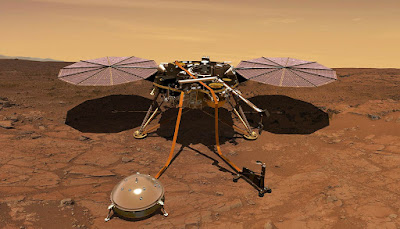SIMULATIONS HIGHLIGHT “MESSY” MARS LANDINGS
Future spacecrafts bound for the moon or past will take advantage of high-powered computer system simulations underway at the College of Michigan that model the particle mayhem propelled by rocket thruster-powered landings.
Throughout descent, tire plumes fluidize surface dirt and dirt, developing craters and buffeting the lander with rugged, rough bits. This activity provides a hold of variables that can endanger a touchdown. Our present understanding of those countless communications is based upon information that's, sometimes, 40 to 50 years of ages.
judi bola terpercaya karier thiago alcantara
"A lot of the available information used in the design phase, consisting of for the approaching Mars 2020 objective, is based upon Apollo-era information," says Jesse Capecelatro, an aide teacher of mechanical design at the College of Michigan.
"Landing-relevant information is very challenging to produce because you can't simply run an experiment on Planet. Current mathematical models damage down in these more severe problems when bits approach supersonic rates. Our team is developing new numerical formulas that enable such simulations."
Capecelatro leads a group developing physics-based models that can be integrated right into codes used by NASA to assist anticipate what will occur when a spacecraft attempts to land countless miles from home.
He focuses on "untidy rough flows" and simulating the habits of liquids made of 2 stages of matter—in this situation strong bits put on hold in a gas.
The Mars 2020 Determination introduced from Cape Canaveral on July 30 and is expected to arrive at Feb. 18, 2021.
Apollo-era landings revealed that disrupted surface material can spread out up to fifty percent a mile, positioning hazards not just on the lander itself however surrounding vehicles or touchdown websites. Despite advancements made in the years since, landings remain fraught with potential hazards.
8 years back, a wind sensing unit on the Interest wanderer was damaged throughout its Mars touchdown. And in April 2019, Israel's SpaceIL lander, Beresheet, was mins from touchdown on the moon when interactions failed and the craft collapsed.
As NASA moves towards new crewed objectives under the Artemis Program, this work becomes more important. Not just do people onboard raise the risks, they imply bigger payloads and, consequently, more powerful tire plumes communicating with the planet's surface.
A lot of the work is performed on Great Lakes, a high-performance computing collection. That allows the research group to dividers the problem over hundreds, and also thousands, of cpus at the same time. Therefore, each cpu does a part of the work and just needs to store a small portion of the total information.
But also one of the most effective computer systems on the planet today can just resolve so many of these communications. To go deeper, Capecelatro uses models—best guesses based upon all available data—to press the simulations further. The objective is to provide a structure NASA can use to better anticipate how various designs will affect the ground and the touchdown, and change.



